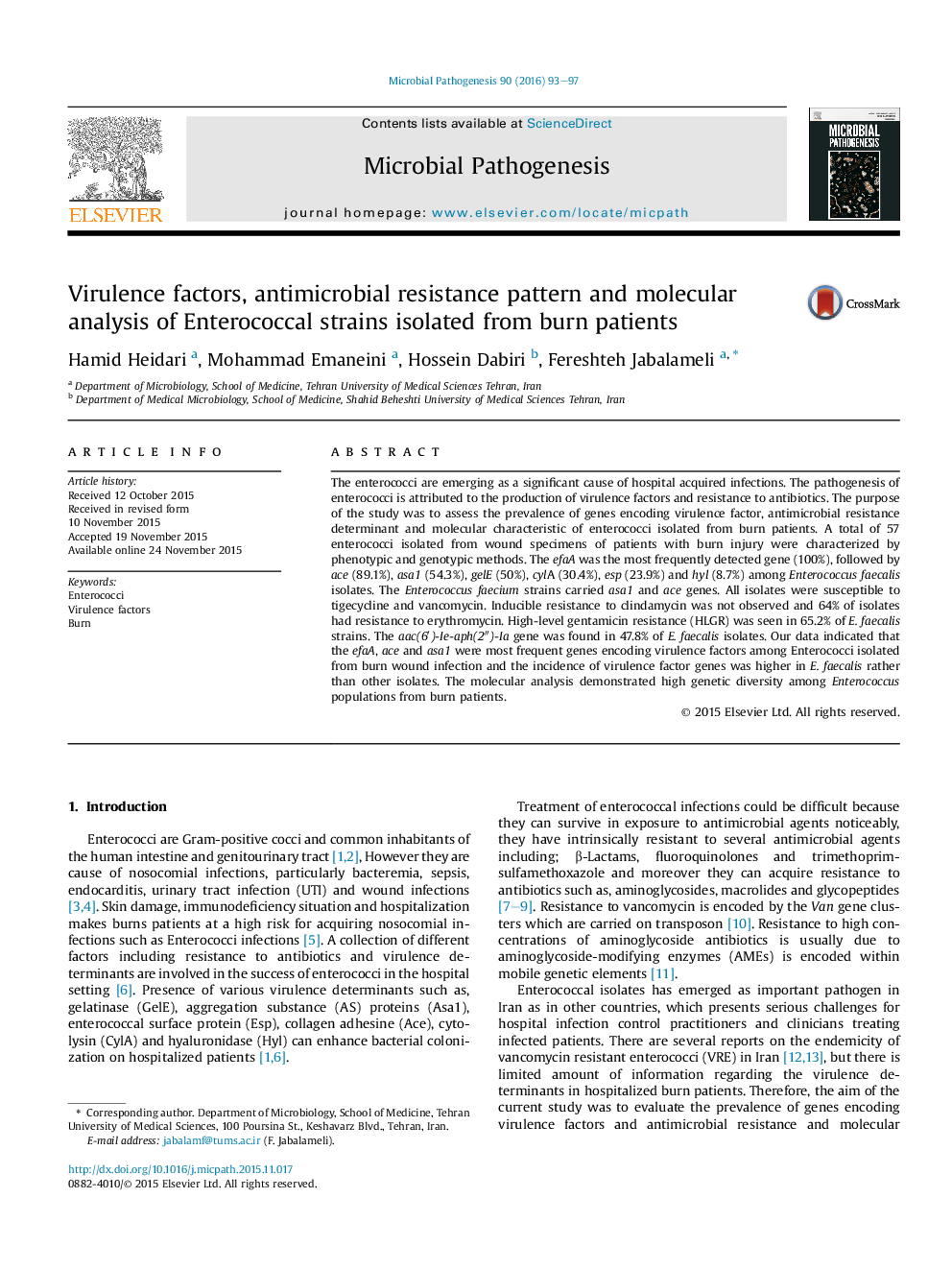| Article ID | Journal | Published Year | Pages | File Type |
|---|---|---|---|---|
| 3416418 | Microbial Pathogenesis | 2016 | 5 Pages |
•Enterococci were isolated from burn patients.•All isolates were susceptible to vancomycin.•HLGR was seen in 65.2% of Enterococcus faecalis strains.•The most frequent virulence genes were efaA(100%), ace (89.1%), and asa1 (54.3%).•There was high genetic diversity among E. faecalis isolates.
The enterococci are emerging as a significant cause of hospital acquired infections. The pathogenesis of enterococci is attributed to the production of virulence factors and resistance to antibiotics. The purpose of the study was to assess the prevalence of genes encoding virulence factor, antimicrobial resistance determinant and molecular characteristic of enterococci isolated from burn patients. A total of 57 enterococci isolated from wound specimens of patients with burn injury were characterized by phenotypic and genotypic methods. The efaA was the most frequently detected gene (100%), followed by ace (89.1%), asa1 (54.3%), gelE (50%), cylA (30.4%), esp (23.9%) and hyl (8.7%) among Enterococcus faecalis isolates. The Enterococcus faecium strains carried asa1 and ace genes. All isolates were susceptible to tigecycline and vancomycin. Inducible resistance to clindamycin was not observed and 64% of isolates had resistance to erythromycin. High-level gentamicin resistance (HLGR) was seen in 65.2% of E. faecalis strains. The aac(6′)-Ie-aph(2″)-Ia gene was found in 47.8% of E. faecalis isolates. Our data indicated that the efaA, ace and asa1 were most frequent genes encoding virulence factors among Enterococci isolated from burn wound infection and the incidence of virulence factor genes was higher in E. faecalis rather than other isolates. The molecular analysis demonstrated high genetic diversity among Enterococcus populations from burn patients.
